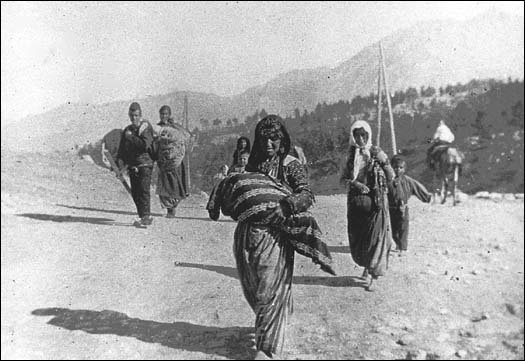
The Photographic Evidence of Armin T.Wegner

The photos of Armin Wegner, intellectual, Doctor in Law, photographer, writer, poet, civil rights defender and eyewitness to the Armenian Genocide, are among the few that capture the bleak struggle for survival that faced Armenian deportees. As a second lieutenant in the German army stationed in the Ottoman Empire in April 1915, Wegner took the initiative to investigate reports of Armenian massacres. Disobeying orders intended to stifle news of the massacres, he collected information on the Genocide and took hundreds of photographs of Armenian deportation camps, primarily in the Syrian desert. Wegner was eventually arrested, but not before he had succeeded in channeling a portion of his research material to Germany and the United States through clandestine mail routes. When he was transferred to Constantinople in November 1916, he secretly took with him photographic plates of images he and other German officers recorded.
Armin T. Wegner was born in Germany in 1886. At the outbreak of World War I, he enrolled as a volunteer nurse in Poland during the winter of 1914-1915, and was decorated with the Iron Cross for assisting the wounded under fire. In April 1915, following the military alliance of Germany and Turkey, he was sent to the Middle East as a member of the German Sanitary Corps. Between July and August, he used his leave to investigate the rumors about the Armenian massacres that had reached him from several sources. In the autumn of the same year, with the rank of second lieutenant in the retinue of Field Marshal Von der Goltz, commander of the 6th Ottoman army in Turkey, he traveled through Asia Minor.
Eluding the strict orders of the Turkish and German authorities (intended to prevent the spread of news, information, correspondence, visual evidence), Wegner collected notes, annotations, documents, letters and took hundreds of photographs in the Armenian deportation camps. With the help of foreign consulates and embassies of other countries, he was able to send some of this material to Germany and the United States. His clandestine mail routes were discovered and Wegner was arrested by the Germans at the request of the Turkish Command and was put to serve in the cholera wards. Having fallen seriously ill, he left Baghdad for Constantinople in November 1916. Hidden in his belt were his photographic plates and those of other German officers with images of the Armenian Genocide to which he had been a witness. In December of the same year he was recalled to Germany.
Wegner was deeply moved by the tragedy of the Armenian people to which he had been eyewitness in Ottoman Turkey. Between 1918 and 1921, he became an active member of pacifist and anti- military movements while dedicating his literary and poetic output to the search for the truth about himself and his fellow man. On February 23, 1919, Wegner’s “Open Letter to President Wilson” appealing for the creation of an independent Armenian state was published in Berliner Tageblatt.
A man of conscience who protested his country’s responsibilities in the Armenian Genocide, Wegner was also one of the earliest voices to protest Hitler’s treatment of the Jews in Germany. He dedicated a great part of his life to the fight for Armenian and Jewish human rights. In 1968 he received an invitation to Armenia from the Catholicos of All Armenians and was awarded with the Order of Saint Gregory the Illuminator. Armin Wegner died in Rome at the age of 92 on May 17, 1978.

1915: Armenian deportees-women, children and elderly men. Woman in foreground is carrying a child in her arms, shielding it from the sun with a shawl; man on left is carrying bedding; no other belongings or food noticeable among effects being carried. All are walking in the sun on an unpaved road with no means of shelter from the elements. Location: Ottoman empire, region Syria.

Taken by A.Wegner


Orphan Camp

























